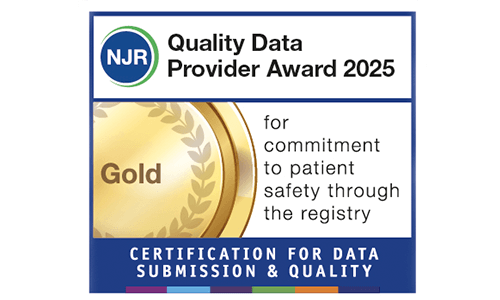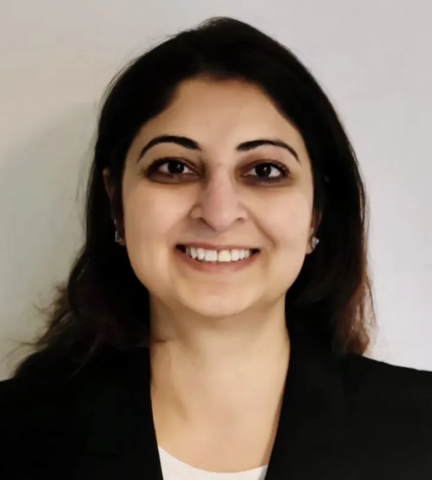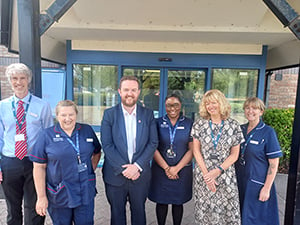Shoulder arthroscopy is a minimally invasive surgical procedure used to diagnose and treat problems inside the shoulder joint. Because it involves only small incisions, it is usually quicker to perform, causes less post-operative pain, and carries a lower risk of complications than open surgery.
If you’re living with a shoulder problem, shoulder arthroscopy could be an effective option for you. Here, we explain what shoulder arthroscopy involves, which conditions it can treat, and what to expect from your procedure with Ramsay Health Care.
What is shoulder arthroscopy?
Shoulder arthroscopy is a type of ‘keyhole’ surgery that allows an orthopaedic surgeon to see inside and treat the shoulder joint using very small incisions.
A thin tube-like instrument called an arthroscope, which has a light and camera at the tip, is inserted through one incision so the surgeon can view the inside of the joint on a screen. The surgeon may insert other small surgical instruments through additional small cuts to carry out repairs during the same procedure.
Most shoulder arthroscopies are carried out under general anaesthetic as a day case, meaning you can usually go home the same day.
What conditions does shoulder arthroscopy treat?
You may be advised to have a shoulder arthroscopy if you have ongoing pain, stiffness, or a limited range of motion that hasn’t improved with non-surgical treatments, such as rest, physiotherapy, medications, or steroid injections. You’re more likely to be recommended for an arthroscopy of the shoulder if scans or examinations show damage inside the joint.
Common conditions treated with shoulder arthroscopy include:
- Rotator cuff tears- repairing the tendons that help lift and rotate the shoulder
- Labrum tears- repairing the ring of cartilage around the shoulder socket
- Ligament injuries- repairing torn or stretched shoulder ligaments
- Loose tissue or fragments- removing pieces of bone or cartilage (shoulder debridement)
- Recurrent shoulder dislocations- repairing damage causing chronic shoulder instability
- Frozen shoulder (adhesive capsulitis)- releasing tight tissue inside the joint
- Arthritis-related damage: removing inflamed or damaged tissue from the shoulder joint
It can also be used to treat shoulder infections, trapped nerve, fractures, cysts, or bony growths called osteophytes (bone spurs).
How to prepare for shoulder arthroscopy?
Before your shoulder arthroscopy, you’ll have a full consultation at Ramsay Health Care. Your orthopaedic surgeon will review your medical history, examine your shoulder, and may arrange imaging tests such as X-rays, ultrasound scans, or MRI scans, to help make an initial diagnosis of your shoulder issue and to confirm that a shoulder arthroscopy is the right option for you.
We’ll give you detailed, personalised instructions on how to prepare for the procedure, which usually include:
- Not eating or drinking for several hours before surgery
- Not taking certain medications beforehand, such as blood thinners, as advised by our medical team
- Showering with unperfumed soap the night before or the morning of your operation
- Wearing loose, comfortable clothing on the day of the procedure
- Arranging for someone to drive you home afterwards
Read more about your stay with Ramsay Health Care.
What does a shoulder arthroscopy involve?
An arthroscopy of the shoulder is usually carried out as a day case under general anaesthetic by a consultant orthopaedic surgeon. The operation typically takes up to an hour, depending on the type and amount of work required inside your shoulder joint.
Before your operation, your surgeon will talk you through exactly what will happen and answer any questions you may have.
Once you’re in surgery, fluid may be gently injected into your shoulder to expand the joint and make it easier to see. Your surgeon will then make small cuts in the skin around your shoulder joint, into which they’ll insert the arthroscope camera. Images from the camera will be shown to the surgeon on a monitor or an eyepiece, allowing them to investigate and identify any issues.
The surgeon may then insert miniature surgical instruments into your shoulder joint to repair or remove any damaged tissue, using the arthroscope camera to guide their work.
Once the procedure is complete and the tools have been removed, your incisions will be closed with stitches and covered with dressings and a protective bandage.
Shoulder arthroscopy aftercare
Most shoulder arthroscopies are performed as outpatient procedures, so you can usually go home the same day as your operation (we recommend you organise someone to drive you home).
After surgery, you’ll be taken to a room to rest and recover as the anaesthetic wears off.
You may feel some disorientation for up to 24 hours after your anaesthetic, and your pain and any swelling is likely to be at its most noticeable during this time. Pain relief medication, rest, and ice packs can help keep you comfortable.
Before you’re discharged, we’ll explain to you how to:
- Care for your surgical site
- Manage any pain and swelling you have
- Find the best position for sleeping
- Begin gentle movements and start rehabilitation
We’ll also arrange follow-up appointments to check your healing and progress. Our Ramsay physiotherapists will support you with a personalised rehabilitation plan to help you recover safely and effectively.
Shoulder arthroscopy recovery
Recovery after shoulder arthroscopy varies from person to person, depending on your condition and the type of repair you’ve had. As a general guide, you can expect the following milestones:
First 1–2 weeks after a shoulder arthroscopy
Your shoulder will feel sore and swollen. Pain and discomfort are normal at this stage, but can be managed with prescribed medication, ice packs, and rest. Gentle hand, wrist, and elbow movements will be encouraged to keep your blood flowing and prevent stiffness. You’ll likely wear a sling to protect the shoulder joint and support early healing.
3–6 weeks after a shoulder arthroscopy
Pain and swelling should gradually reduce. You might still need your sling, but you’ll typically begin physiotherapy exercises aimed at improving your range of motion. You should feel more comfortable carrying out light daily tasks, such as eating with both hands and dressing. If you work a desk job, you’ll likely be able to return to work. However, lifting, reaching overhead, and strenuous activity should still be avoided.
7–12 weeks after a shoulder arthroscopy
You should notice significant improvements when moving your shoulder. Physiotherapy will focus on stretching and introducing strengthening exercises. You should feel confident with a range of everyday activities and light exercise, although your shoulder may still feel weak or stiff at times. Many patients are cleared to return to driving during this period.
3–6 months after a shoulder arthroscopy
Your strength and mobility will continue to improve as your physiotherapy programme becomes more intensive. You should be able to return to moderate activities during this period, like swimming, gentle gym exercises, or non-contact sports, depending on the original injury and the details of the surgery you had.
6–12 months after a shoulder arthroscopy
Full recovery can take up to a year. By six months, most people have regained good strength, flexibility, and function in the shoulder, and can return to contact sports or heavy lifting. Those with physically demanding jobs may be cleared to return to full activity at work. Some patients may still experience mild stiffness or weakness, particularly after more complex procedures such as rotator cuff repair.
What are the benefits of an arthroscopy of the shoulder?
If you’re experiencing ongoing shoulder problems, a shoulder arthroscopy could be a suitable and effective treatment option for you.
This minimally invasive procedure can identify or confirm a diagnosis by allowing a surgeon to see directly into your shoulder without requiring you to have open surgery. During the operation, your surgeon can use small tools to address the problem, including removing or repairing damaged tissue.
Because it’s less invasive than traditional open surgery, shoulder arthroscopy offers several benefits, including:
- A faster healing time
- Less post-surgery pain
- Less risk of infection and other complications
- Quicker recovery and an earlier return to normal activities
Potential risks and complications of shoulder arthroscopy
Like all operations, shoulder arthroscopy carries some risks, but serious complications are uncommon. Most people recover without any problems.
Possible post-operative complications can include:
- Temporary pain and/or inflammation at the surgical site
- Bleeding that lasts more than a few days
- Shoulder joint infection
- Scarring
- Bleeding inside the joint
- Lasting stiffness or reduced range of motion
- Blood clots (deep vein thrombosis)
- Damage to the inside of the shoulder joint or surrounding nerves or blood vessels
- Loss of use of your arm and hand (rare)
- The procedure not fully resolving the problem, which may require further surgery
Your surgeon will talk you through these risks before your operation and explain what can be done to minimise them.
Shoulder arthroscopy cost
We have a range of options available at Ramsay when it comes to covering the cost of your shoulder arthroscopy.
If you decide to pay for the procedure yourself, we offer an all-inclusive Total Care package, with a single one-off payment, at a pre-agreed price. This gives you direct access to all the treatment you need for complete reassurance. You can also choose to spread the cost of your shoulder arthroscopy with our available finance options.
A shoulder arthroscopy may also be covered by your medical insurance policy. We advise you to check directly with your insurance provider and get written confirmation before commencing treatment with us.
Shoulder arthroscopy at Ramsay Health Care
At Ramsay Health Care, you can expect patient-focused care delivered by expert healthcare professionals across our network of hospitals in the UK.
Your shoulder arthroscopy will be carried out by an experienced consultant orthopaedic surgeon who specialises in shoulder surgery. They will be supported by a skilled multidisciplinary team, including physiotherapists, to deliver expert care throughout your treatment and recovery.
Book an appointment today and discuss your shoulder arthroscopy with one of our specialists.
Shoulder arthroscopy FAQs


